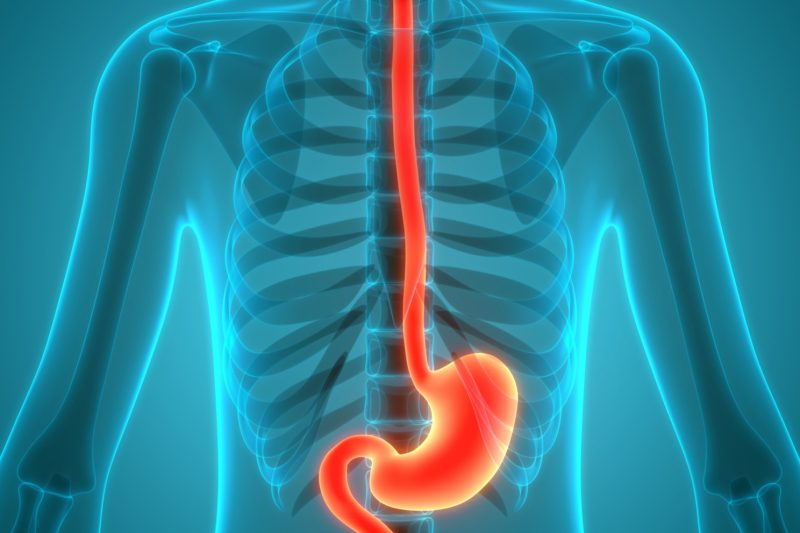Health
Parkinson’s may take a ‘gut-first’ path
Damage to upper GI lining linked to future risk of Parkinson’s disease, says new study
The risk of developing Parkinson’s disease was 76 percent higher among those with damage to the lining of their upper gastrointestinal tract than among those without, according to a study led by researchers at Harvard-affiliated Beth Israel Deaconess Medical Center.
The study sheds light on the way Parkinson’s may develop and suggests that increased vigilance among those with upper GI mucosal damage may be warranted. Damage is typically identified as ulcerations caused by the H. pylori bacterium, gastroesophageal reflux disease (GERD) and/or use of non-steroidal anti-inflammatory drugs (NSAIDS) such as ibuprofen. The findings are published in JAMA Network Open.
“A growing body of evidence suggests that, at least in a subset of individuals, Parkinson’s disease originates in the gut before affecting the central nervous system,” said corresponding author Trisha S. Pasricha, a neurogastroenterologist and director of Clinical Research at the Institute for Gut-Brain Research at BIDMC. “People often think about the ways the brain influences the gut, but the gut can exert enormous influence on the brain in ways we are still only beginning to understand.
“A growing body of evidence suggests that, at least in a subset of individuals, Parkinson’s disease originates in the gut before affecting the central nervous system.”
Trisha S. Pasricha
“Many people who get Parkinson’s disease experience GI symptoms like constipation and nausea for years — even decades — prior to developing motor symptoms like difficulty walking or tremors. Our lab has been trying to better illuminate this ‘gut-first’ pathway of Parkinson’s disease because it can open new avenues for early intervention and treatment strategies.”
Parkinson’s disease, a progressive neurodegenerative disorder, affects an estimated 8.5 million people worldwide — a figure that has more than doubled over the past three decades. To explore this “gut-first hypothesis,” Pasricha and colleagues performed a retrospective cohort study using patient data from an electronic database encompassing a representation of urban academic centers as well as outpatient clinics and community hospitals in the Greater Boston area.
Between 2000 and 2005, investigators identified a cohort of patients with no history of Parkinson’s disease who underwent an upper endoscopy — a procedure to image and diagnose problems in the esophagus, stomach, and first portion of the small intestine, which together make up the upper GI tract. Patients with injuries to the lining of the upper GI tract, called mucosal damage, were matched in a 1:3 ratio with patients without mucosal damage. All patients were followed through July 2023.
Of 2,338 patients with mucosal damage, 2.2 percent were later diagnosed with Parkinson’s disease, while of the 8,955 patients without mucosal damage, 0.5 percent went on to develop Parkinson’s.
After adjusting for confounders, the risk of developing Parkinson’s disease was 76 percent higher among those with a history of mucosal damage than among those without. On average, Parkinson’s disease was diagnosed 14.2 years after mucosal damage was detected on an upper endoscopy.
“NSAID use is so widespread — from back pain to headaches — and with peptic ulcers globally affecting upwards of 8 million people, understanding the path from mucosal damage to Parkinson’s disease pathology may prove crucial to early recognition of risk as well as potential intervention,” said Pasricha, who is also an instructor of medicine at Harvard Medical School.
This work was conducted with support from the UM1TR004408 award through Harvard Catalyst: The Harvard Clinical and Translational Science Center, Parenthesis, National Center for Advancing Translational Sciences (National Institutes of Health) and financial contributions from Harvard University and its affiliated academic health care centers. Kulkarni is supported by grants from the National Institute on Aging, (R01AG066768 and R21AG072107). Pasricha is funded by the American Gastroenterological Association Research Foundation’s Research Scholar Award. (AGA2022-13-03). Pasricha reported receiving grants from the American Gastroenterological Association during the conduct of the study. No other disclosures were reported.
More like this
Health
Smokers are less likely to develop Parkinson’s. Why?
Researchers test theory explaining medical mystery and identify potential new treatment
Health
Faster ‘in a dish’ model may speed up treatment for Parkinson’s
Could result in personalized models to test diagnostic and treatment strategies





